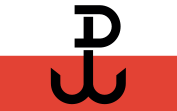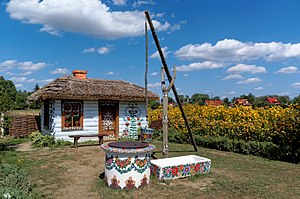Welcome to the Poland Portal — Witaj w Portalu o Polsce

From Polish history –
Selected image –
Did you know –
- ... that when confronted with an ethical dilemma, Celestyn Czaplic's (pictured) contemporaries asked themselves, "what would Czaplic think of that?"
- ... that the Zielony Balonik ("Green Balloon") literary cabaret of Kraków was rumoured to be a place of "orgies, nude dancing and all manner of dissipation"?
- ... that during a decade of the interbellum, Germany and Poland fought a customs war?
- ... that the poem " Murzynek Bambo" ("Bambo the Little Negro") by Julian Tuwim has been criticised for its portrayal of black people?
- ... that before his death in 2011, Tadeusz Sawicz was believed to have been the last surviving Polish pilot to have fought in the Battle of Britain?
You can help!
Selected biography –
Selected location –
Poland now
Recent events
- On 9 June, the ruling Civic Coalition won the European Parliament election in Poland (results map pictured).
- On 8 June, Polish tennis player Iga Świątek won the 2024 French Open, her fifth Grand Slam singles title.
- On 21 May, Jan A.P. Kaczmarek, a composer best known for writing film scores, died at the age of 71.
- On 10 May, an unusually spectacular aurora borealis was observed in large parts of Poland due to an intense solar storm.
- On 8 April, local elections were held throughout Poland, with run-off votes in some municipalities held on 21 April.
Ongoing
Constitutional crisis •
Belarus–EU border crisis •
Ukrainian refugee crisis •
Polish farmers' protests
Holidays and observances in June 2024
(statutory public holidays in bold)
- Children's Day (5-year-old Józef Feldman pictured), 1 June
Subcategories
Topics
Related portals
|
|
|
|
|
|
|
|
| Belarus | Czech Republic | Germany | Lithuania | Russia | Slovakia | Ukraine |
|
|
|
|
|
| Europe | Catholicism | Communism | European Union |
Associated Wikimedia
The following Wikimedia Foundation sister projects provide more on this subject:
-
Commons
Free media repository -
Wikibooks
Free textbooks and manuals -
Wikidata
Free knowledge base -
Wikinews
Free-content news -
Wikiquote
Collection of quotations -
Wikisource
Free-content library -
Wikiversity
Free learning tools -
Wikivoyage
Free travel guide -
Wiktionary
Dictionary and thesaurus
Wikipedias in the languages of Poland
|
|
Kaszëbskô Wikipedijô Kashubian Wikipedia |
|
Polska Wikipedia Polish Wikipedia |
|
Ślůnsko Wikipedyjo Silesian Wikipedia |
|
Wymysiöeryś Wikipedyj Vilamovian Wikipedia Incubator |
Беларуская • Česky • Deutsch • Հայերեն • Lietuvių • Romani • Русский • Slovenčina • Українська • ייִדיש






























